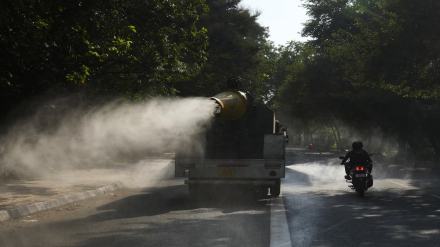By Priyanka Singh and Aishwarya Tiwari
Eight years ago, in October 2014, PM Modi launched the Swachh Bharat Mission (SBM). Since then, the Government has worked on a mission mode to make India open defecation-free, ensure scientific solid waste management and bring about a behaviour change among citizens. There is little doubt that the Mission succeeded in eliminating open defecation from large parts of the country while also improving the capacity of Urban Local Bodies (ULB) to treat waste. In fact, the recently released SBM Urban 2.0 guidelines reveal that SBM capacity to manage waste went up from 18% in 2014 to 70% in 2021. SBM’s success and approach are worth emulating and India’s National Clean Air Programme (NCAP) could benefit from taking inspiration from the SBM template.
In 2019, the Union Government launched the NCAP recognising the increasing threat of air pollution in Indian cities. This has given a boost to air quality action on the ground, with the government making fervent efforts to ensure ‘Swacch Vayu’ for the citizens. However, much more could be achieved if NCAP were to draw lessons from SBM’s success.
Also Read: Connaught Place smog tower has noticeable impact on air pollution up to 300 mts: Delhi Minister Gopal Rai
First, the NCAP must enter a ‘mission mode’. A ‘mission’ usually involves a well-defined set of objectives, scope, implementation milestones and targets. A 2021 CEEW study found that while NCAP establishes a clear set of objectives and a schedule for attaining them, the sector-specific indicators and related emission reduction targets required to achieve the required 20-30 per cent decrease in Particulate Matter (PM) levels are not specified. Programmes having an output orientation are more likely to be implemented quickly and successfully than programmes with only an outcome orientation and no clearly determined outputs. For example, in the case of SBM, there was a defined output target of constructing 65 lakh toilets by 2019 in order to eliminate open defecation in India. Such a clearly defined output target served a catalytic role in the success of the SBM.
Second, private partnerships for innovation and entrepreneurship must be encouraged to bring back the blue skies. The City Action Plans do not identify avenues for private sector participation. Under SBM, various activities like door-to-door collection of waste, street sweeping, treatment and disposal, etc. were carried out through public-private partnerships (PPPs) in cities like Indore, Jaipur, Nagpur, Surat, etc. These partnerships were institutionalized in the form of service contracts and concessionaire agreements. SBM empanelled over 40 private agencies to support the measures taken up by the government for solid waste management. Similar participation could be encouraged under the NCAP by introducing Public Private Partnership models for plying of e-buses, introduction of Intelligent Transport Management Systems, or carrying out of Information, Education & Communication activities through Corporate Social Responsibility funds.
Third, efforts must be scaled up to transform NCAP into a “Jan Andolan”. The success of SBM also has much to do with the way in which it turned into a people’s movement. Air pollution is an anthropogenic phenomenon, and the awareness, or jankari, among the masses with respect to how their actions contribute to the degradation of air quality would enhance the bhagidari on their behalf. SBM conceptualised volunteer cadres like Swacchagrahis and Nigrani Samitis that helped ensure the sustained use of toilets instead of open defecation along with spreading awareness regarding sanitation practices. Such Nigrani Committees or volunteers could be conceived under the aegis of NCAP, who could sensitise people about the dangers of air pollution, while also exhorting people to adopt practices that lead to a reduction in air pollution like not burning waste in the open and opting for cleaner transport and cooking fuel.
Finally, the key to a successful mission against air pollution is collaborative action. While NCAP is limited to 131 non-attainment cities (NACs) alone, the issue of air pollution transcends administrative boundaries. With a significant contribution from transboundary sources, the city-level programs are more likely to succeed if there is room for regional participation and collaboration among cities as well as adjacent rural communities, which are all located in the same area (known as an ‘airshed’). Like SBM expanded its ambit to include both rural and urban India, the fight against air pollution must include villages and smaller cities, which face air pollution in the same way as larger cities do. The Commission for Air Quality Management (CAQM) has set an excellent example of regional collaboration to combat air pollution, and it is critical that it be replicated in other parts of the country.
Improving India’s air quality requires a comprehensive approach that includes actionable targets, innovation and entrepreneurship, citizen participation, and urban-rural collaboration. Let us hope that eight years after the successful introduction of SBM, we mark 2022-23 as the year when our quest for Swachh Vayu turned into a national mission embraced by one and all.
(Priyanka Singh is a Programme Associate and Aishwarya Tiwari is a Research Analyst at the Council on Energy, Environment and Water, an independent not-for-profit policy research institution. Views are personal.)
